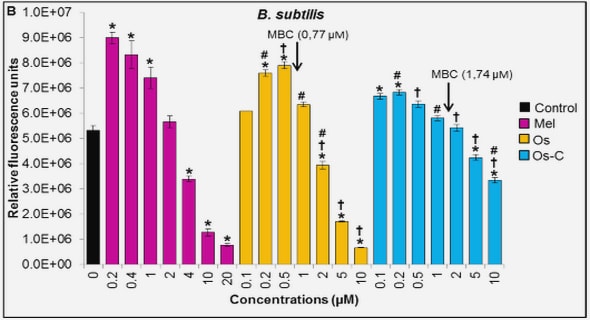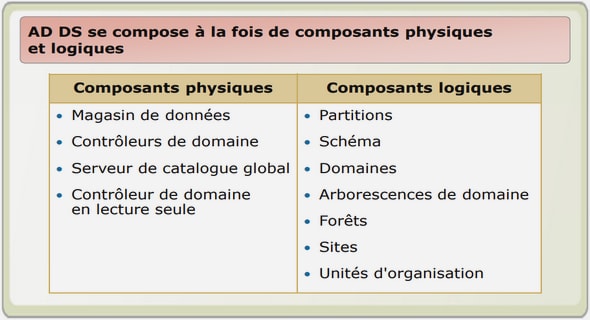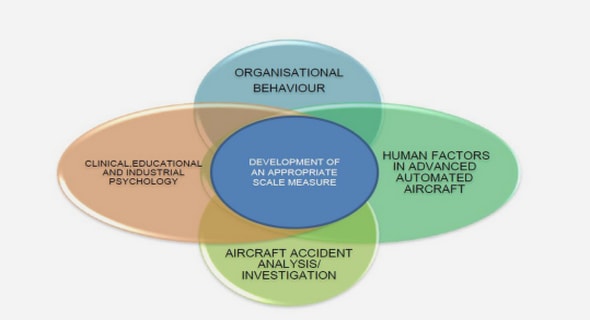Get Complete Project Material File(s) Now! »
Gender equality, discrimination and recruitment
This section will explain existing theories regarding recruitment that will help us ana-lyze our empirical findings later in the thesis. It will contain the following: gender equality, discrimination and a part about recruitment. This section will also present an eleven-step plan from Equal Opportunities Ombudsman, EOO, which can guide organi-zations’ recruitment processes in order to make them more gender equal.
Gender equality
Gender equality is a popular research area. According to Oakley (2000) ‘the glass ceil-ing’ is often used as a term to describe gender biases in the form of invisible barriers that prevent women from reaching higher positions within organizations. These barriers exist within corporate practices and have behavioral and cultural causes, which include gender imbalances within recruitment and promotion, gender-stereotypes and networks (Oakley 2000).
One theory is that gender inequalities exist because of structural orders in our society, a theory that is supported by Holgersson (2003) and Elg and Jonnergård (2011). Accord-ing to EOO (2006) norms for leadership are close to the norms for manhood, which cre-ate expectations that leaders should be men. Elg and Jonnergård (2011) have reached the conclusion that coordinating work and family can be a problem that may hinder ca-reer advancement within the audit profession. This is because the profession requires auditors to work long hours as well as keeping a close contact with clients. In an article from the magazine Balans (Halling, 2005), Holgersson, an associate professor within gender, organization and management, says that time and new generations are not enough to solve the issue of gender inequality. Instead people need to work actively for a change to happen.
Discrimination
In Sweden it is illegal to discriminate against candidates based on gender and other cat-egories such as religion and age, in recruitments (Discrimination Act, 1:4 & 2:1). Dis-crimination is about treating people in negative ways as a result of legal frameworks, norms and power structures in society. Although it does not need to be intentional (Equality Ombudsman, 20122a) since discrimination could be both direct and indirect (Discrimination Act, 1:4). Many researchers have pointed out that discrimination is a fundamental part of recruitments, since people are always selected respectively dese-lected (Equality Ombudsman, 2012a). Neergaard in a report by the Equality Ombuds-man (2012a) states that recruitment processes are often seen as linear processes, which end up with the best person landing the job, while in reality rules and routines within the processes can affect people in different ways, which may be discriminatory (Neergaard in Equality Ombudsman, 2012a). Rydgren (2004) divides discrimination into three dif-ferent types, which he identified as especially important, these are: Network effects, in-stitutional discrimination and statistical discrimination.
Network effects
According to Rydgren (2004), Bolander (2002), Holgersson (2003), Elg and Jonnergård (2011) it is easier to build an informal network consisting of your own gender, because people tend to connect with persons similar to themselves, so called homophily. It be-comes discriminating when persons outside the networks are excluded (Rydgren, 2004). ‘Old boys’ network’ is a name for male networks and informal social systems, which exclude women and less powerful men (Oakley 2000). Elg and Jonnergård (2011) state that sauna, sport and restaurant visits develop and strengthen the male dominance within these networks. When you are a member it is easier to achieve information and influ-ence (Elg & Jonnergård, 2011). Recruitment sometimes develops from relationships with the members of such networks instead of looking at merits (Rydgren 2004; Taylor 2000; Elg & Jonnergård, 2011).
Institutional and statistical discrimination
Rydgren (2004) states that institutional discrimination exists within organizations when certain rules, instructions or requirements affect certain groups more than others. In this way discrimination can become a part of the recruitment process and not only be limited to solitary actions (Equality Ombudsman, 2012a). Statistical discrimination is about treating others based on prejudices and stereotypical images of certain groups. In this way, people are discriminated since their own personal characteristics are neglected and instead generalized with the groups’ characteristics (Rydgren, 2004).
Recruitment
A formal, objective and transparent recruitment process could minimize the risk for gender bias and discrimination in recruitments (Brink, Benschop & Jansen, 2010; Bo-lander 2002). Most research about gender equality in recruitment regards gender quotas, however gender quotation is not an approved method by the Swedish Discrimination Act and few conclusions have been drawn regarding the outcomes of these studies (Equality Ombudsman, 2012a,b).
Competence recruitment
According to the Swedish Discrimination Act the employer should encourage an even gender distribution through education and competence development (Discrimination Act 2008:567, 3:8). To be able to recruit people without discriminating, a clear and well-documented recruitment process is necessary (Lindelöw, Löfgren, Persdotter, Engblom & Gunnerud, 2012). Recruitment based on competence is about clearly defin-ing which competences that are required. It is a structural recruitment method that only lets competences guide the recruitment process (Lindelöw et al. 2012, Broomé, Ljung-berg, Rönnqvist & Schölin, 2006). However, Holgersson (2003) and Bolander (2002) found that a problem within recruitment is that there are vague conceptions about what a competence is, which makes it difficult to formulate relevant selection criteria.
Decision-making
Brink et al. (2010) state that a decision is transparent when people inside and outside an organization can access information about how decisions are made. This will make them accountable for their performance and policies (Brink et al., 2010). However, there exist several problems with decision-making (March, 1987). One problem is conflict of interests, meaning that different individuals or groups want different things, which could lead to initiatives to change or modify information in favor of certain interests (March, 1987). According to Page (2009), people are biased. Page states that both con-scious and unconscious biases affect people’s decisions. People are affected by their ini-tial knowledge and motivations when they search for information, evaluate information, and also how they remember information (Page, 2009; Kahneman, 2003). Ross (2008) states that people make decisions every day that might favor one specific group or per-son, without being aware of it.
Eleven steps to a gender equal recruitment process
Equality Opportunities Ombudsman3 (EOO, 2006) has an eleven-step plan that can guide organizations’ recruitment processes in order to make them more gender equal. These steps are: gender equality plan, recruitment group, profile of demands, recruit-ment channels, leader recruitment, advertising, interviews, evaluation, hiring decision, assessment and finally the goal
Gender equality plan
In the gender equality plan, the employer should specify goals regarding gender equality and methods how to reach these goals. A minimum goal should be 40/60 percent (EOO, 2006), which means that it should be at least 40 respectively 60 percent of each gender on all work tasks and positions (Equality Ombudsman, 2009). One way to accomplish gender equality goals is affirmative action. There exist clear guidelines on how to use affirmative action; all applicants still need to be considered, merits need to be measured by clear and transparent criteria, it should be related to the goals, and the differences in merits should not be significant (EOO, 2006).
Recruitment group
By having both women and men included in the recruitment group it increases the chance that all applicants are evaluated on fair and equal terms. There will also be a smaller risk that gender stereotypical decisions will affect the recruitment. In addition, the people working with recruitment need to be educated about the Equality Opportuni-ties Act4, the gender equality plan and other policies attached to them (EOO, 2006).
Profile of demands
There should be a clear and gender-neutral profile of demands. Specifications that could be discriminatory should be avoided. Vague expressions such as ‘social competence’ and ‘flexibility’ should be discussed beforehand, so that everyone has the same definitions. Previous coworkers should not be used as role characters, because then the posi-tions become gender labeled (EOO, 2006).
Recruitment channels
Recruitment channels should be evaluated and chosen in a way so that it will provide the best selection. To recruit based on personal networks is unlikely to result in the best competence and is often discriminatory. Other actions are: Mentorships, work rotation, individual work and development plans (EOO, 2006).
Leader recruitment
When it comes to leader recruitment most promotions are through internal advancement or by headhunting leaders. This mainly benefits men, although a structural and open process could change this. It could also be beneficial to be more open about promotion systems and let individuals apply themselves, since it will increase the chance to find the right candidates. The recruiters also need to be educated in gender equality and be able to take look at their own judgments with a critical eye (EOO, 2006).
Advertising
The formal demands for the job should be described in gender-neutral terms and not re-quest characteristics generally associated with a certain gender (EOO, 2006).
Interviews
The goal should be to interview as many as possible of the under-represented gender. Questions with personal character should be avoided if not necessary, since these kinds of question increase the risk of discriminating candidates (EOO, 2006).
Evaluation
The original profile of demands should be kept and new requirements should not be in-vented in the midst of the process. The recruitment group should be aware that women and men present their qualifications differently. Qualifications should therefore be eval-uated gender neutral and to the point (EOO, 2006)
Hiring decision
Before the hiring decision is made, the gender equality plan should be checked in order to make sure that it has been followed. Applicants from the under-represented gender with equivalent merits should be prioritized if it has been decided to do so in the gender equality plan (EOO, 2006).
Assessment
The recruitment process should be assessed when it is finished. To find out if it went according to plans and if someone from the under-represented gender was hired. If not, factual reasons should be able to explain why, both to the applicants and to the trade un-ions. New goals for an updated plan should be formulated based on previous experienc-es (EOO, 2006).
The goal
According to EOO (2006), by following these steps, there is a good chance to reach the goals of a more gender equal workplace. This will affect the gender development in so-ciety and attitudes within and outside the workplace.
Summary gender equality, discrimination and recruitment
To summarize, according to Lindelöw et al. (2012) and Broomé et al. (2006) recruit-ment based on competence is about clearly defining which competences that are re-quired. However decision-making is not always rational; it can often be affected by con-flicts of interests as well as conscious and unconscious biases. It is illegal to discrimi-nate against people because of their gender (Discrimination Act, 1:5). Discrimination can take many forms, such as network effects, institutional and statistical discrimination (Rydgren, 2004). According to EOO (2006) norms for leadership are close to the norms for manhood, which create expectations that leaders should be men. In an article from the magazine Balans (Halling, 2005), Holgersson says that time and new generations are not enough to solve the issue of gender inequality. EOO (2006) has an eleven-step plan that can guide organizations’ recruitment processes in order to make them more gender equal. These steps include having a minimum goal of 40 percent of each gender. The profile of demands should be clear and gender neutral and the recruitment channels should not consist of informal networks. When recruiting leaders there should be a structural and open process and the recruiters should be educated in gender equality. New requirements should not be added during the process. In the end, before the hiring decision is made, the recruiters should check the gender equality plan to make sure that it has been followed (EOO, 2006).
1The audit partner and gender equality
1.1The audit profession in Sweden
1.2The career ladder within the profession
1.3Women in the audit profession
1.4The audit partner
1.5The partner gender distribution
1.6Why are few women as audit partners a problem?
1.7Purpose of the research
2Gender equality, discrimination and recruitment
2.1Gender equality
2.2Discrimination
2.3Recruitment
2.4Eleven steps to a gender equal recruitment process
2.5Summary gender equality, discrimination and recruitment
3Data collection and data analysis
3.1Interviews
4Empirical findings from interviews
4.1The partner recruitment process
4.2What it takes to become a partner
4.3Women versus men in the audit profession
4.4Gender equality
5Analysis
5.1The partner recruitment process
5.2What it takes to become a partner
5.3Women versus men in the audit profession
5.4Gender equality
6Conclusions
7Further studies
List of references
GET THE COMPLETE PROJECT
Becoming a partner in the audit profession -Does the partner recruitment process discriminate against women?


